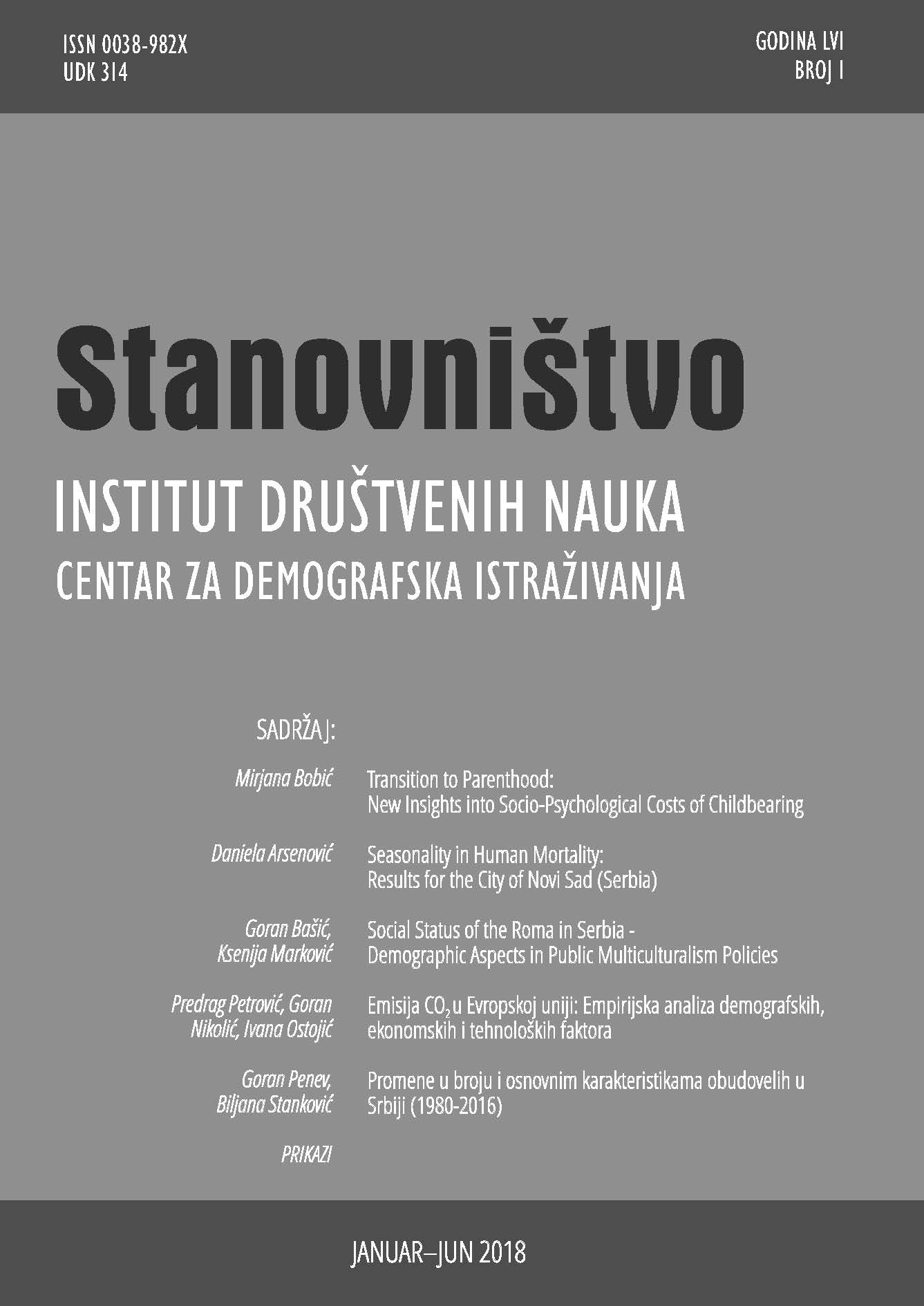Emisija CO2 u Evropskoj uniji: Empirijska analiza demografskih, ekonomskih i tehnoloških faktora
Emissions of CO2 in the European Union: Empirical analysis of demographic, economic and technological factors
Author(s): Predrag Petrović, Goran Nikolić, Ivana M. OstojićSubject(s): Energy and Environmental Studies, Demography and human biology, Human Ecology
Published by: Институт друштвених наука
Keywords: CO2 emission; population; per capita GDP; energy intensity; elasticity
Summary/Abstract: Greenhouse gases emissions (GHG) and global climate change phenomena have been top priorities on the agenda of highest-level policy makers for a long period of time now. Scientists are well-familiarised with the fact that use of fossil fuels, such as oil derivatives and coal, is the main generator of harmful gases. In addi-tion, possible substitutions for fossil fuels in the form of other energy sources are very limited, and it should be remembered that other energy sources also have certain adverse environmental effects. Bearing in mind climate change caused by products of fossil fuels combustion, as well as inevitable depletion of natural crude oil resources, management of growing global energy demand becomes one of the key goals and challenges of 21st century.This study is dedicated to lightening up of most significant demographic, eco-nomic and technological indicators of carbon dioxide (CO2) emissions in 28 EU member states in the period between 1991 and 2014. The research results, based on logarithmic STIRPAT model and application of econometric techniques on unbalanced panel data sample of 587 (247) observations, indicate that impact of GDP per capita is statistically significant and positive. An increase in GDP per capita growth rate of 1% leads to increased CO2 emissions growth rate ranging between 1.10% and 1.15%. The results unequivocally suggest positive impact of energy intensity to CO2 emissions. Increased growth rate in relative energy consumption of 1% results in increased CO2 emission growth rate ranging between 1.07% and 1.09%. This analysis reinforces the conclusions of numerous empirical studies that im-pact of population on CO2 emissions is significant and positive. An increase in demographic growth rate of 1% implies increased CO2 emission growth rate ranging between 0.74% and 1.02%. In other words, low fertility rate in the Euro-pean Union might have positive effect on CO2 emissions reduction. In addition, possibility that elasticity of CO2 emission growth rate in relation to population growth rate is changed depending on the size of population growth rate is rejected on the basis of obtained findings. Impact of gross value added of manufacturing and demographic variables repre-senting the population age structure (share of children and adolescents younger than 14 and share of working age population in total population) is not estimated as statistically significant. Finally, the result that average household size does not determine the CO2 emis-sion should be construed very carefully, since it was obtained on quite small sample, thus questioning representativeness and validity thereof.
Journal: Stanovništvo
- Issue Year: 56/2018
- Issue No: 1
- Page Range: 63-82
- Page Count: 20
- Language: Serbian

